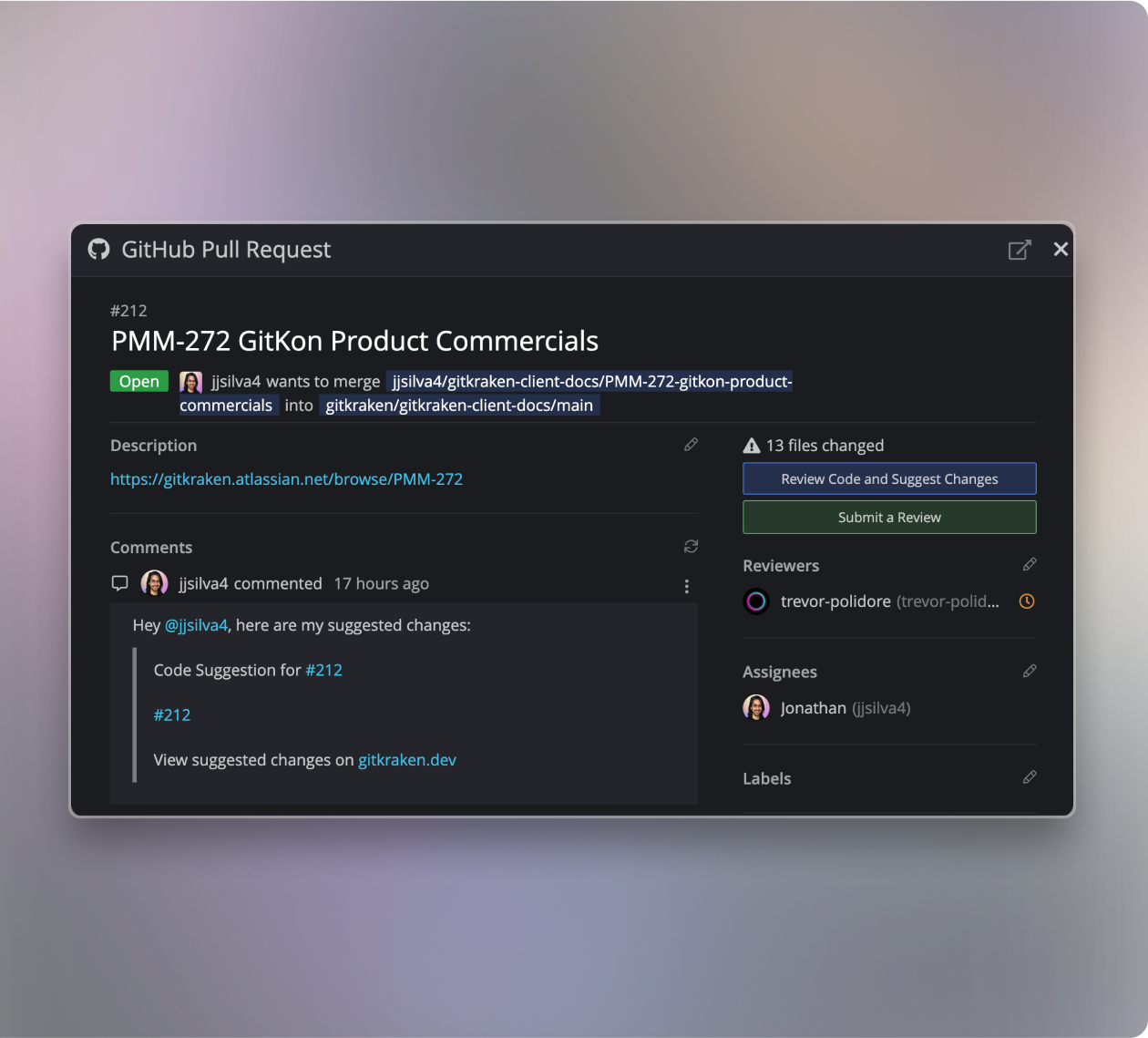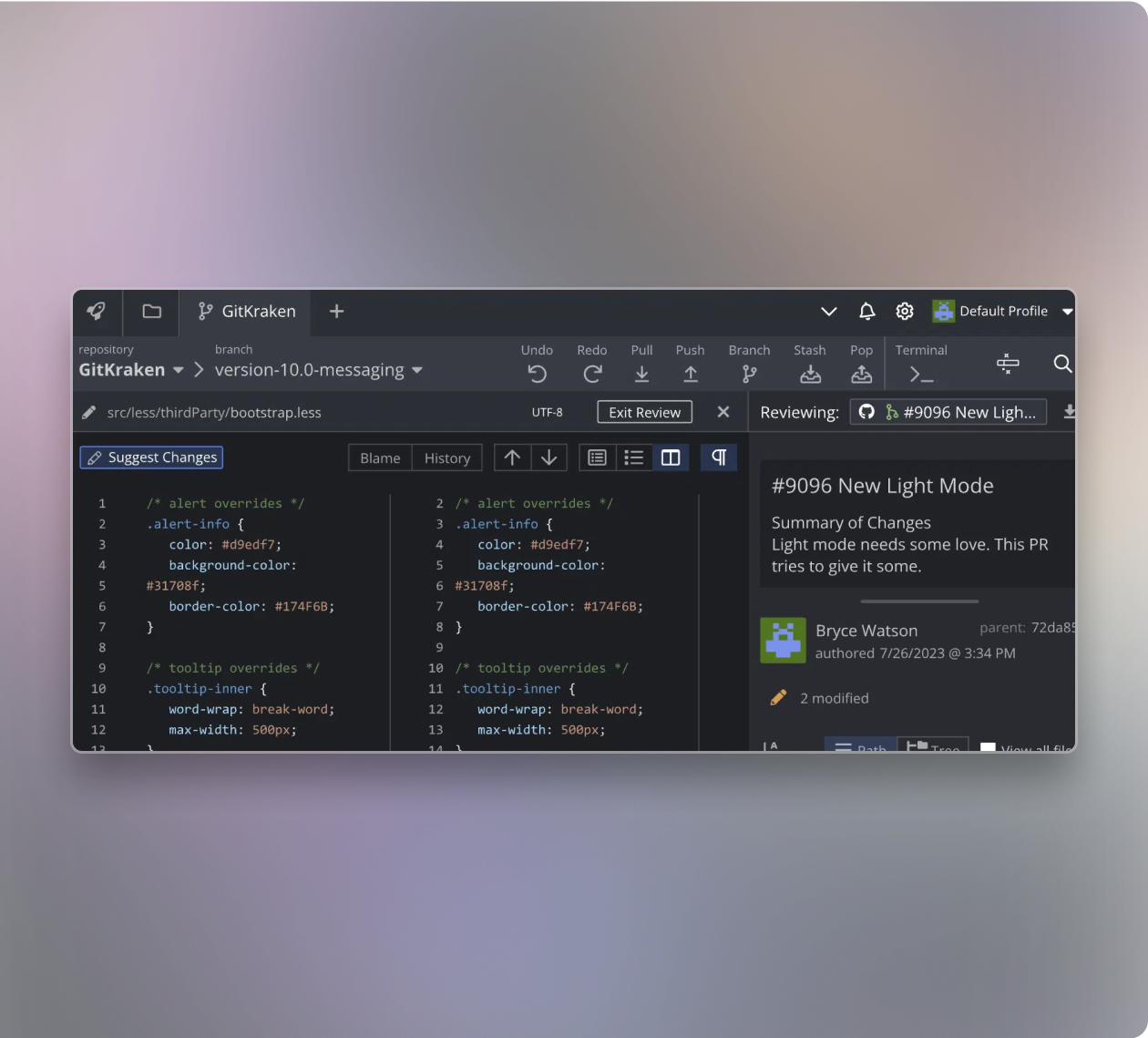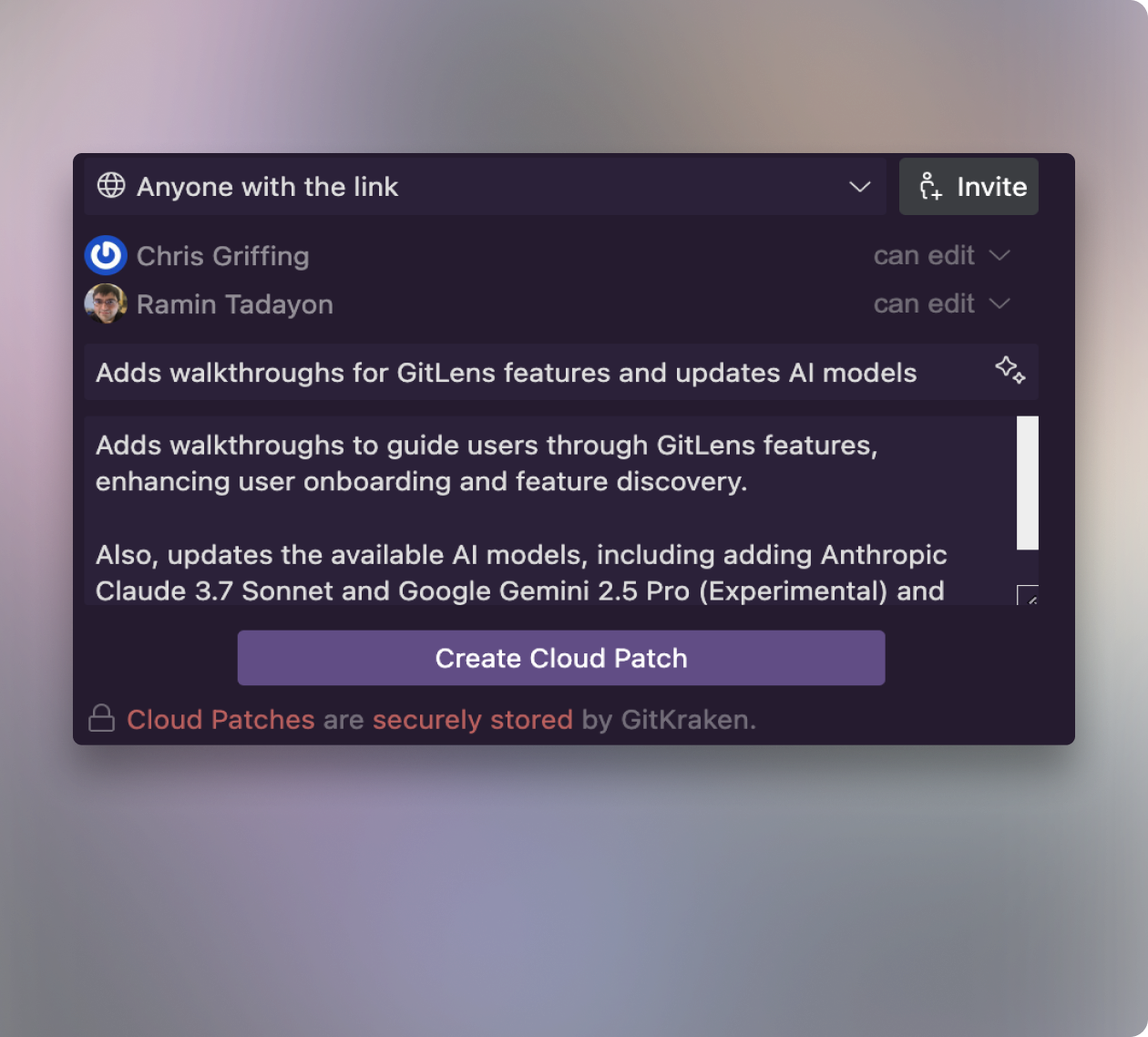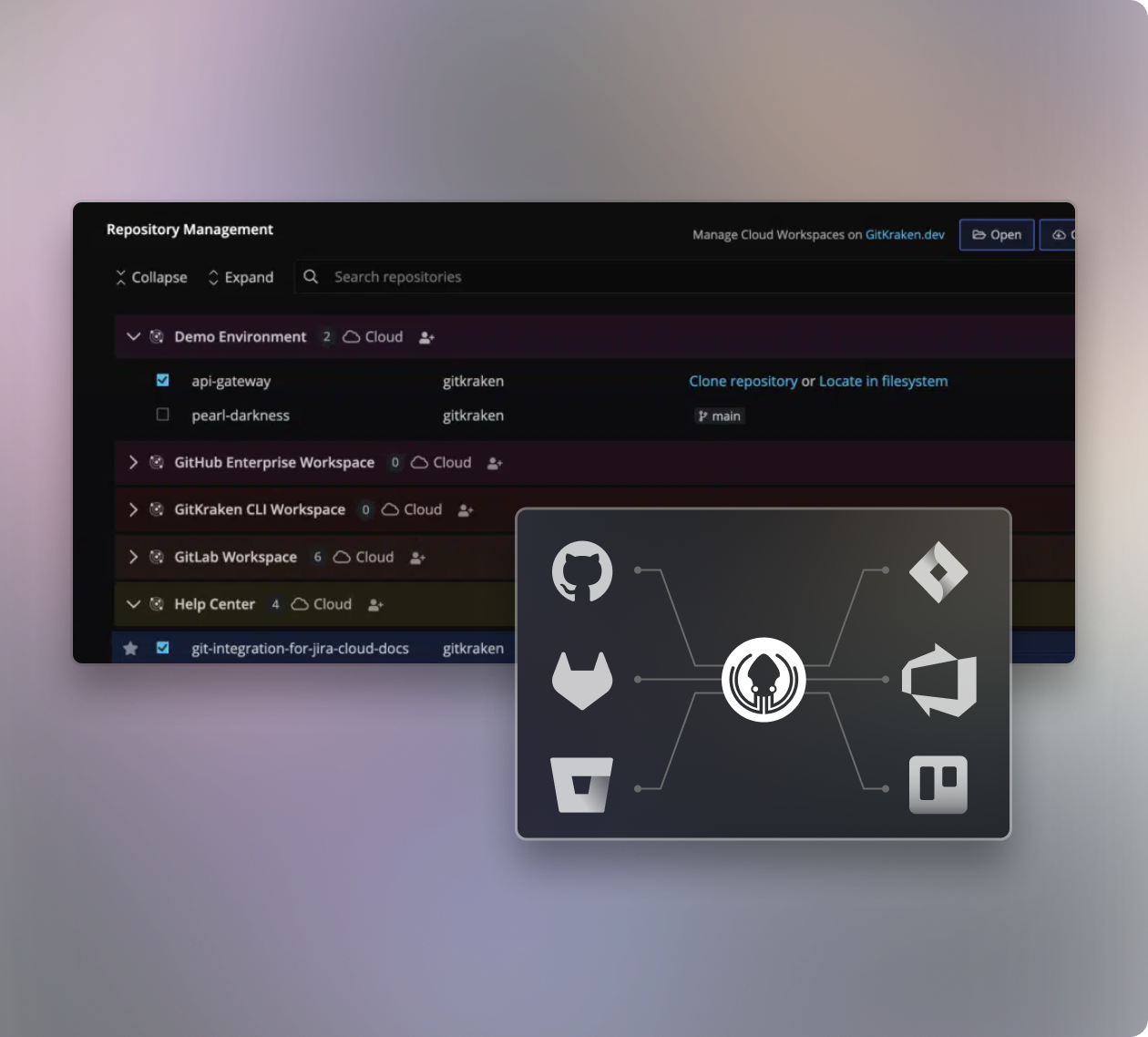 PR & Code Review
PR & Code Review PR & Code Review that actually keeps you moving
GitKraken’s code review tools let you suggest, review, merge, and collaborate smoothly from your IDE, browser, or terminal.
Try Any GitKraken Tool For Free

Trusted by 40M+ Developers & 100K Organizations Worldwide
Ship faster, review smarter
Developers and leaders alike are losing time (and morale) to scattered Git tools, siloed PRs, and slow sprint cycles. GitKraken fixes that by uniting critical work into one tool.
Clear priorities, less chaos
Searching across platforms for PRs and issues wastes time and breaks developer flow.
Early feedback, fewer surprises
With Cloud Patches, get reviews started before full PRs; share work-in-progress to iterate earlier.
Do more than just comment
Code Suggest lets you propose edits anywhere in your project (not just in diffs).
Maintain review momentum
Manage, approve, merge, or reject PRs. No more bouncing between tools or tabs. One Platform. PRs Without the Pain.
GitKraken brings clarity and speed to every step of the PR and code review process, helping devs plan, code, review, and ship with less friction and more confidence.


Draft
Draft PRs and templates ensure clear requirements before review.

Share
Cloud Patches let you share work early, before it’s merged.

Iterate
Inline suggestions and PR review mode accelerate approvals.

Merge
Merge confidently with CI visibility, suggested fixes, and fewer surprises.
How GitKraken Improves PR & Code Review to Redefine your workflow
GitKraken AI integrates directly into your workflows to help you move from idea to commit, and from PR to merge—faster and with less friction.
Code Suggest 

Take action on GitHub Pull Requests with GitKraken Code Suggest
Review code directly in-app and propose changes your teammates can apply with one click.
- Go beyond GitHub’s comment-only feedback. Instead of just pointing out issues, suggest actual code edits across any file in your project. It’s as easy as suggesting text in Google Docs, but built for developers and Git workflows.
PR Reviews 

PR review made easy: smooth collaboration, swift decisions
- Easily review, edit, merge, approve, and comment on pull requests with GitKraken PR review mode.
- Effortlessly manage your code review tasks while staying focused on your work.
Cloud Patches 

Collaborate early and often with Cloud Patches
- Cut delays in PR reviews by sharing work-in-progress early and without committing to the repo.
- Easily iterate on changes together and ultimately speed up merging.
- Maintain tight control of code sharing all along the way.
Workspace Manager 

Group repos, collaborate faster, onboard devs seamlessly in GitKraken Workspaces
- Multi-repo actions (pull/fetch/clone) synchronized across your tools
- Shared cloud workspaces give managers visibility and control
Code Suggest 

Take action on GitHub Pull Requests with GitKraken Code Suggest
Review code directly in-app and propose changes your teammates can apply with one click.
- Go beyond GitHub’s comment-only feedback. Instead of just pointing out issues, suggest actual code edits across any file in your project. It’s as easy as suggesting text in Google Docs, but built for developers and Git workflows.

PR Reviews 

PR review made easy: smooth collaboration, swift decisions
- Easily review, edit, merge, approve, and comment on pull requests with GitKraken PR review mode.
- Effortlessly manage your code review tasks while staying focused on your work.

Cloud Patches 

Collaborate early and often with Cloud Patches
- Cut delays in PR reviews by sharing work-in-progress early and without committing to the repo.
- Easily iterate on changes together and ultimately speed up merging.
- Maintain tight control of code sharing all along the way.

Workspace Manager 

Group repos, collaborate faster, onboard devs seamlessly in GitKraken Workspaces
- Multi-repo actions (pull/fetch/clone) synchronized across your tools
- Shared cloud workspaces give managers visibility and control

The Results Speak for Themselves
GitKraken integrates directly into your existing workflows to help you move from idea to commit, and from PR to merge, faster and with less friction.
Trusted by Development Teams Worldwide
“A powerful and user‑friendly git client for businesses … I love the versatility and cross‑platform compatibility of GitKraken. We have developers all over the world who use different types of machines and it still works great.”
- Jason L., Full Stack Engineer I 
“As an avid developer, I've found it indispensable for boosting productivity and streamlining collaboration within my team. With a user-friendly interface and seamless integration across various platforms, GitKraken has truly transformed the way I code”
- Lorelai Kirby, Robotics Engineer 
Which tools/features/platforms/etc do you swear by?
“Gitkraken. Changed my life.”
- r/webdev user ReplacementLow6704 
Ready to Redefine Your Code Review Workflow?
Join 40M+ developers who trust GitKraken to simplify, accelerate, and scale their Git workflows.

 GitKraken MCP
GitKraken MCP GitKraken Insights
GitKraken Insights Dev Team Automations
Dev Team Automations AI & Security Controls
AI & Security Controls




